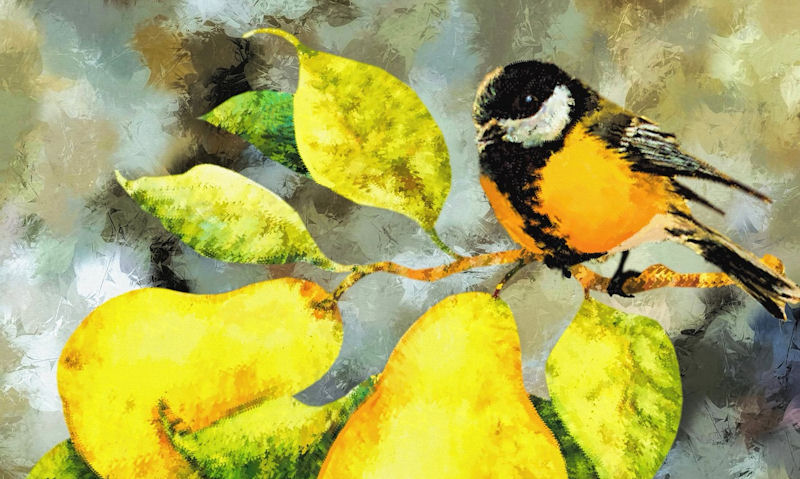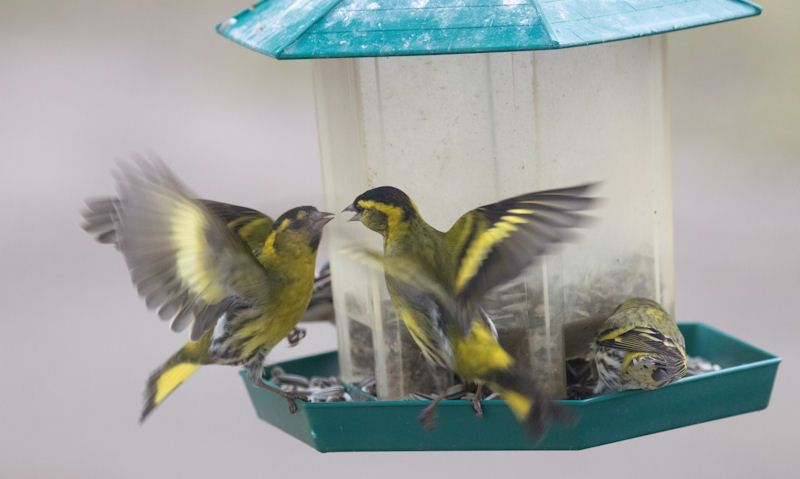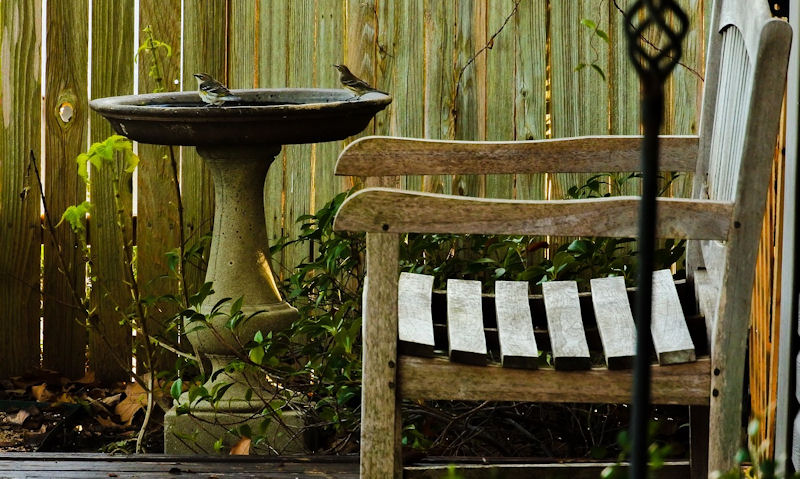Can wild birds eat pears
Wild birds consume fruits out in the wild so are bound to be happy trying a cut open pear you leave out for them in the garden.
Garden bird love pears and will nibble on it over the course of the day, but only expect few species to eat a pear, including Thrushes, Tits and Starlings. To make a pear safe to eat you can remove the seeds as in a small quantity, they can be toxic. Offer a cut open pear on the bird table, ground or impale on spike.
Wild birds will eat all kinds of fruit left out for them in the garden as few are natural fruit eating birds - so its not that different at all.
Pears, much like offering apples to wild birds, must be opened up to allow birds to access the soft, fleshy centre - rather than piercing the tougher pear skin.
To feed birds a pear must not be in place of their regular bird feed, as not all wild birds are fruit eating, so will have to go without.
Instead, its best to offer a cut open pear - with seeds removed - along with their regular food source on the bird table or impale on the bird feeding station.
To leave a pear out in the elements for an extending period of time will see it bruise, but that's OK as bruise pears are easier to consume.
Birds will experiment will all types of fresh or bruised fruits much as you can try different fruits - or vegetables - to see which becomes more popular.
Wild birds can eat pears
If you have a pear to spare there's absolutely no harm in offering it to wild birds visiting your garden - getting birds to eat a pear is a different matter.
In what is a fruit different to what wild birds eat out in the wild, bare in mind this is new territory to local birds so the pear won't ever be popular.
Instead, its advisable to offer a cut open pear (with seeds removed) in an area that is not only easily accessible, but among their current feeding options.
No way will wild birds attempt to eat at a pear when there's seeds, nuts or fat balls a plenty.
In many respects, you'd need to reduce their favourites to almost nothing, while only offering a pear on their regular feeding grounds.
Do this early in the morning when they're more likely to eat in large numbers, as they scramble for a little regular bird feed, plus a cut in half pear - but that can only apply to birds who only eat fruit.
Benefits to garden birds
To get a wild bird of any kind to consume a pear just a little bit is one thing, but in doing so is sure to offer wonderful health benefits.
What will benefit wild birds the most if eating a pear is protein, fibre and vitamins.
Its therefore better to serve up a pear in the winter when the wild birds are in need of high energy food.
To serve up pears in the spring or early summer, which is perfectly fine once in a while - can be a choking hazard to their young.
No common small garden bird is likely to consume high amounts of a pear, so no one bird will feel the full benefits.
But to serve up a pear just to offer those in desperate need of energy will be most welcomed - and enjoyable to view if you get the chance.
Pear loving wild birds
Fruits of all kind can be experimented on with wild birds who visit your garden, but to offer them a pear will only be a tempting thought by a few species.
Most common nibblers of any fruit grown in the wild of in ones garden are Thrushes, Tits and Starlings.
To receive any of these wonderful birds in your garden can see interest in the pear.
While Thrushes can be less common - they certainly are for me - Blue Tits, Great Tits and the occasional Long Tailed Tit can bite into a pear.
What you won't be short of is a visit by Starlings, so expect them to at least show a little interest in the pear, even if its a bite or two.
Of course any wild bird that visits your garden frequently could bite on a pear to try it, so be sure to expect the unexpected.
Bruised pears or fresh options
How you offer the pear in terms of freshness really doesn't matter, though I would recommend only offering pears at room temperature.
To serve right out of the fridge can be difficult for wild birds to bite on as fruit can be a little harder until left out of the fridge for ten minutes or so.
In arriving home from shopping with a bag of fresh pears, feel free to cut one in half and place it in the garden.
However, if the pears are way past the freshness stage of being ripe and juicy, that's also fine to feed wild birds.
In fact at this stage would be better conditions to feed bruise pears as the outer skin is easier to pierce, and so too is the fleshy middle easier to eat.
Go ahead and feed wild birds bruised pears or fresher options, we can't be too picky when its hard enough to get birds to eat their fruit in the first place.
Make it safer to eat
While all types of fruits containing seeds, or pits for that matter, are perfectly safe for wild birds to consume, caution needs to be taken.
For example, seeds found inside pears contain a little bit of cardiac-toxic cyanide compound - its toxic to wild birds as well as pet birds.
Its therefore important you cut the pear in half as to allow you to cut out all seeds.
It really isn't a big concern if leaving the seeds inside the pear as they would have to be consumed in a large quantity.
But as it happens, while seeds are a big source of food for wild birds on a daily basis out in the wild or in bird feeders - they can be a choking hazard to their young.
So to be safe than sorry, I highly recommend you remove all seeds from the pear.
Best ways to offer pears
How you feed a pear to wild birds out in your garden is a trail and error process, as its likely you'll miss the opportunity if positioning a pear in the wrong location.
And as it happens never insert a pear in half or whole inside any type of bird feeder; not all wild birds use feeders so you will be limiting your feeding birds.
So instead, and if you have it, a bird table on a stand with a roof would be a good open, and so too will a open top bird table.
But I understand you may have a wild bird feeding station with a multitude of feeders hanging off it, so you can use that.
Why not see if there's an area on the curving brackets on the feeding station that allow an area to firmly wedge one or two half pears in.
If not spike the pear in the chain link of a hanging feeding or use the top or metal wire.
But what I would recommend at extra cost is using a specialty hanging apple bird feeder that is designed to hold all types of fruits, and not just an apple.
To summarise
Don't be afraid to leave out fresh or a bruised pear out in your garden to see if your birds show interest, because they certainly will.
Wild birds love eating fruit out in nature so are bound to attempt to nibble on a pear.
Health benefits are a plenty with pears as they contain vitamins, fibre and protein; so any one bird is sure to benefit most if eating more pear as possible.
Pear loving common garden wild birds including Thrushes, Tits and Starlings; other species are likely to try a pear once in a while.
Before you offer a a pre-cut open pear to your birds it will indeed need to be removed of its seeds, as in small quantity only it can be toxic.
Pear seeds can also be a little choking hazard to the birds young.
To present a pear to wild birds of course all you need to do is cut it in half as to offer the soft fleshy part to birds - while giving you the opportunity to remove all seeds.


